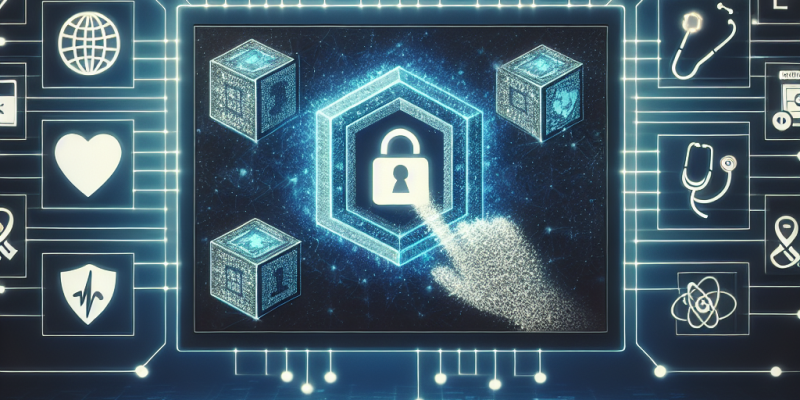Blockchain and Healthcare: Enhancing Transparency and Security in Patient Data Management

Blockchain and Healthcare: Enhancing Transparency and Security in Patient Data Management
In recent years, the healthcare industry has faced growing challenges in managing patient data effectively and securely. With the increasing volume of sensitive information generated, healthcare organizations must seek innovative solutions that can enhance data transparency and security. One technology that is gaining significant traction in this regard is blockchain. By enabling secure data sharing and providing a transparent and immutable ledger, blockchain technology has the potential to revolutionize how patient data is managed, ultimately improving healthcare delivery and patient outcomes.
Understanding Blockchain Technology
Blockchain is a distributed ledger technology that allows multiple parties to maintain a shared database in a secure and decentralized manner. Each transaction or piece of data is recorded as a "block," which is then linked to previous blocks, forming a "chain." This chain is replicated across a network of computers, making it nearly impossible to alter data retroactively without consensus from the network participants.
The key characteristics of blockchain—decentralization, transparency, and immutability—make it particularly appealing for the healthcare sector, where the integrity and security of patient information are paramount.
Enhancing Transparency in Patient Data Management
Transparency in patient data management is crucial for various stakeholders, including healthcare providers, insurers, and patients themselves. Here’s how blockchain technology can bolster transparency:
-
Patient-Centric Data Control: Blockchain enables patients to have greater control over their health data. By providing patients with a secure digital identity linked to their medical records, they can grant access to specific healthcare providers while maintaining control over who views their information.
-
Audit Trails: The immutability of blockchain ensures that every interaction with patient data is recorded, creating a comprehensive audit trail. This allows healthcare organizations to monitor and verify access to sensitive information, ensuring compliance with regulations such as the Health Insurance Portability and Accountability Act (HIPAA) in the United States.
- Interoperability: One of the most significant challenges in healthcare is the lack of standardized formats across systems. Blockchain can facilitate interoperability by providing a common platform for different healthcare systems to share information securely and transparently. This can lead to better coordination among providers and improved patient care.
Strengthening Security in Patient Data Management
The rise of cyber threats has necessitated the need for robust security solutions in healthcare. Here’s how blockchain addresses security concerns:
-
Data Integrity: The cryptographic nature of blockchain means that once a piece of data is recorded, it cannot be altered without altering the entire chain. This ensures that patient data remains accurate and reliable, protecting against data tampering and fraud.
-
Decentralized Storage: Traditional databases are centralized and can be vulnerable to attacks. Blockchain disperses data across a network, significantly reducing the risk of a single point of failure. This distributed approach makes it much harder for hackers to access or manipulate sensitive patient information.
- Encryption and Privacy: Blockchain can employ advanced encryption techniques to protect patient data. Only authorized users with the appropriate decryption keys can access the information, safeguarding against unauthorized access and ensuring patient privacy.
Real-World Applications of Blockchain in Healthcare
Several healthcare organizations and startups are already exploring blockchain applications:
-
Patient Record Management: Companies like Patientory and Solve.Care are leveraging blockchain to create secure platforms for storing and sharing patient health records, facilitating seamless access for both patients and healthcare providers.
-
Supply Chain Management: Blockchain is being used to track the pharmaceutical supply chain, ensuring the integrity of medications. Companies such as MediLedger are developing solutions to authenticate drug shipments and prevent counterfeit products from entering the market.
- Clinical Trials and Research: Blockchain can enhance the transparency and integrity of clinical trials by providing a non-alterable record of trial data, making it easier to verify results and ensure compliance with regulatory requirements.
Challenges and Considerations
While blockchain holds great promise for transforming healthcare data management, certain challenges must be addressed:
-
Regulatory Framework: The rapidly evolving nature of blockchain technology poses challenges in aligning with existing regulatory frameworks. Clear guidelines are needed to govern the use of blockchain in healthcare.
-
Scalability: Blockchain systems can face challenges regarding transaction speed and scalability, particularly in high-volume environments. Solutions must be developed to ensure blockchain can handle the demands of the healthcare industry.
- Interoperability with Existing Systems: Integrating blockchain with existing healthcare systems may require significant investment and technical expertise. Stakeholders must work collaboratively to ensure seamless interoperability.
Conclusion
Blockchain technology represents a transformative opportunity for the healthcare sector, offering enhanced transparency and security in patient data management. By utilizing its core characteristics, healthcare organizations can improve data integrity, patient privacy, and interoperability. While challenges remain, ongoing advancements and collaborations across the industry will be critical in realizing the potential of blockchain in healthcare. As stakeholders continue to explore and adopt this technology, patients stand to benefit from more secure, efficient, and transparent care delivery systems.













